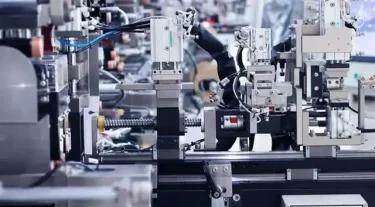
# Tape Production Process and Techniques
## Introduction to Tape Manufacturing
Tape manufacturing is a complex process that involves multiple steps to create adhesive products for various applications. From packaging tapes to medical adhesives, the production techniques have evolved significantly over the years to meet diverse industry needs.
## Raw Materials Selection
The foundation of quality tape production lies in careful material selection:
– Backing materials (paper, plastic films, or cloth)
– Adhesive compounds (rubber-based, acrylic, or silicone)
– Release liners (for pressure-sensitive tapes)
– Additives (tackifiers, stabilizers, and fillers)
## The Tape Production Process
### 1. Backing Material Preparation
The process begins with preparing the backing material. For plastic films, this involves extrusion or calendaring to achieve the desired thickness and properties. Paper backings undergo special treatments to enhance strength and moisture resistance.
### 2. Adhesive Application
There are several methods for applying adhesive:
– Solution coating: Adhesive dissolved in solvent and applied
– Hot melt coating: Thermoplastic adhesive applied in molten form
– Water-based coating: Environmentally friendly alternative
– 100% solids coating: No solvents or water used
### 3. Drying and Curing
After application, the adhesive must be dried or cured:
– Solvent-based adhesives require extensive drying tunnels
– Water-based systems use lower temperature drying
– UV or electron beam curing for certain specialty tapes
### 4. Laminating and Converting
The final steps include:
– Applying release liners (if needed)
– Slitting the wide rolls into narrower widths
– Rewinding into final product rolls
– Die-cutting for special shapes (in some cases)
## Quality Control Measures
Stringent quality checks ensure consistent performance:
– Adhesion strength testing
– Tensile strength measurements
– Thickness uniformity checks
– Visual inspection for defects
– Aging tests for long-term performance
## Advanced Manufacturing Techniques
Modern tape production incorporates innovative methods:
– Multi-layer co-extrusion for complex structures
– Micro-patterned adhesives for special applications
– Nanotechnology-enhanced adhesives
– Automated inspection systems with machine vision
## Environmental Considerations
Sustainable practices are increasingly important:
– Solvent recovery systems
– Water-based adhesive formulations
– Recyclable backing materials
– Energy-efficient drying processes
– Waste reduction initiatives
## Future Trends in Tape Manufacturing
The industry continues to evolve with:
– Smart tapes with embedded sensors
– Biodegradable adhesive formulations
– High-performance tapes for extreme conditions
– Customizable adhesive properties
– Automated, AI-driven production lines
From everyday packaging to specialized industrial applications, tape manufacturing remains a vital industry that combines material science with precision engineering to create products that hold our world together – quite literally.
Keyword: tape manufacturing